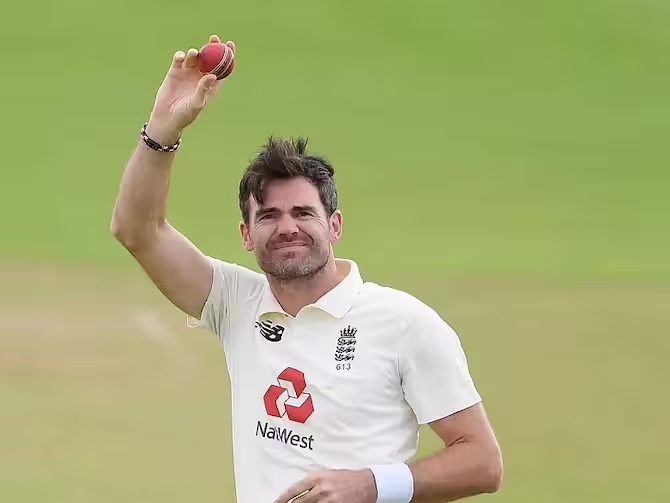
“I’m going to miss walking out for England so much,” said Jimmy Anderson’s statement after he had announced his plan to retire from international cricket later this summer. “But I know the time is right to step aside and let others realise their dreams just like I got to, because there is no greater feeling.”
The celebratory mood would have been soured somewhat by his beloved Burnley’s relegation from the English Premier League later on Saturday, but there’s little doubt that Anderson can now look back on a career quite unlike most others. Pace bowling has always been a young man’s pursuit, but so acute was Anderson’s understanding of the craft that he enjoyed some of his best years as he approached his 40th birthday.
Fitness and conditioning undoubtedly played a part, as did focussing on just one format for the best part of a decade. While contemporaries jumped on to the T20 bandwagon and did lengthy retirement tours, Anderson would be back at the start of each English summer, in pristine white, hooping the ball around corners and testing both edges of the bat with his immaculate control.
It’s also incredible to think that most of his storied career, with 700 Test wickets, was spent trying to prove that he was far more than a one-trick pony. Though he may not say it openly, the making of Anderson the bowler probably lay in missing out on the greatest English cricket summer of all. He had very much been part of the first XI in the summers of 2003, when he made his debut, and 2004, but by the time Michael Vaughan and crew lined up against Ricky Ponting’s Australia at Lord’s in 2005, Simon Jones, Steve Harmison, Matthew Hoggard and Andrew Flintoff were the pace quartet tasked with regaining the Ashes after a generation.
For More Sports Related Information Click Here
It isn’t an exaggeration to say that Jones and Flintoff never recovered from their Herculean efforts that summer. Hoggard was sidelined on the tour of New Zealand in 2008, when Anderson’s partnership with Stuart Broad first started to blossom, and Harmison last played in 2009 as a wan shadow of the Ashes enforcer he had been four years earlier.
Perhaps, both he and Broad learned their lessons from their predecessors. While both could be relentless with their tails up, neither really pushed themselves into the red zone as far as striving for pace was concerned. Such was Anderson’s skill and mastery of subtle movement that a bowling speed in the mid-130s (km/hr) was more than enough to flummox the best batters, Sachin Tendulkar and Virat Kohli included.
The pandemic years, when others struggled to keep afloat, saw Anderson mine a rich vein of form. In 27 Tests across 2020, 2021 and 2022, he took an incredible 98 wickets at an average a little over 20. The subsequent downturn – 25 wickets in 10 Tests – probably told both him and the team management that the Indian summer was over.
It’s interesting that Anderson has already referenced being involved with England in some sort of coaching capacity. Part of the generation that succeeded Darren Gough and Angus Fraser, Anderson then saw the Ashes heroes of 2005 burn out. Better than anyone, he knows that red-ball cricket is not just about skills alone. It’s about putting in the hard yards day after day, with near-monastic discipline. In an instant-gratification era, few have the appetite for such Ironman sacrifices.
Finally, both Brendon McCullum and Ben Stokes deserve credit for managing this transition as they have. Letting go of your greatest and most influential players is the biggest challenge a coach can face. It requires a rare combination of honesty and ruthlessness to move on and rebuild. Sir Alex Ferguson did it twice at Manchester United, jettisoning first Paul Ince and, later, Roy Keane. These were men who set the dressing-room culture, apart from demanding the highest standards from their teammates on the field.
There were times on the recent tour of India when Anderson still looked England’s most accomplished bowler by a street. But the intervals between such spells had started to become longer and longer. With 18 months to go before the next Ashes in Australia, England needed to look ahead. Having taking 24 wickets across five Tests when Andrew Strauss’s team won there in 2010-11, don’t discount the possibility of Anderson being there, passing on his matchless nous and experience.
Also Read: Rohit’s struggle versus KKR brings back not-so-good memories from the past